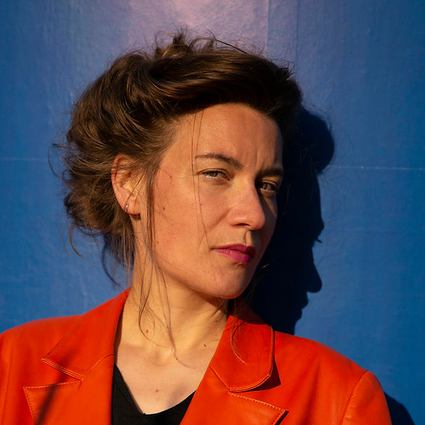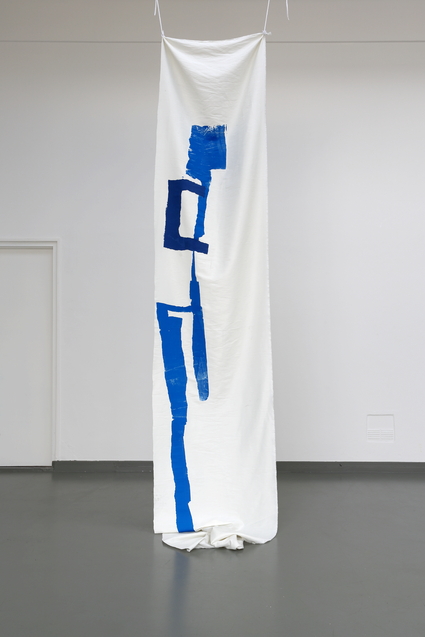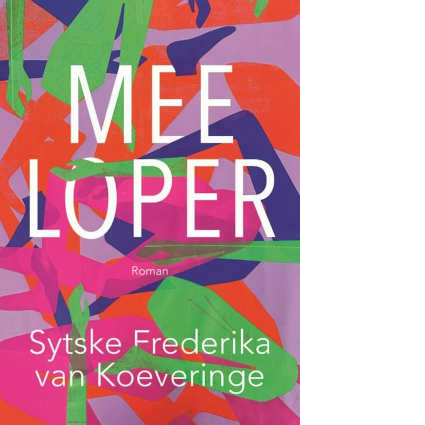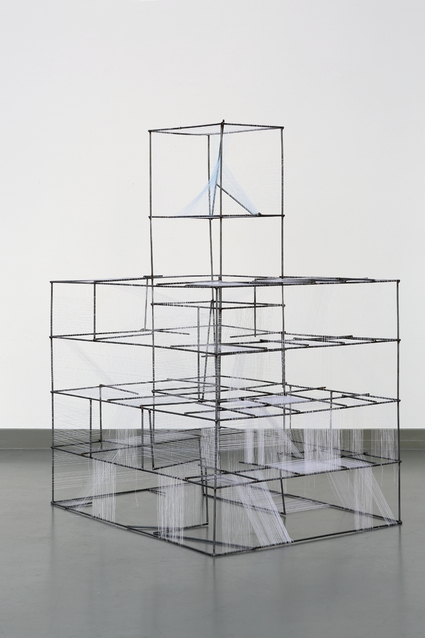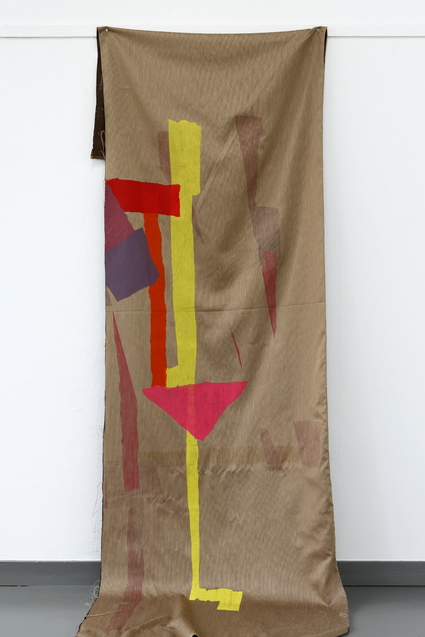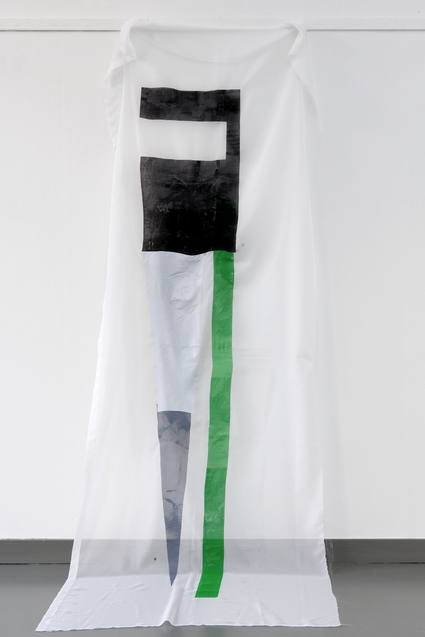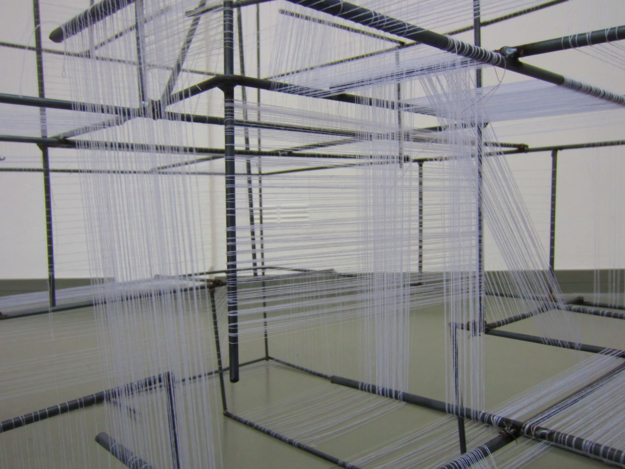Q: To start, can you tell us a bit about yourself and your journey as a writer/artist so far?
A: At first, I didn't realize I was steadily writing a novel, working on it week after week, month after month. Because I used to think I could only be a writer or a visual artist, not both. But after I published my novel, I missed working with my hands and making art.
After my novel, I completed a residency at the Jan van Eyck Academie in Maastricht where I found different materials to work with, such as silk screens or to work with metal, but I was also surrounded by artists who practiced multiple disciplines. There, I realized I could do both writing and visual art together. It seemed silly not to see it before, but things often become clear later. So yes, that moment was really an eye opener and I embraced the idea that I could do both things I love.
Q:Do you feel like they coexist now? Is there a relationship between your writing and your visual art? Or do you still keep it a bit separate?
A: No, for me, it feels like it all just naturally flows out of me. But when I talk to others, I notice that many people struggle to see them together. They often ask if I'm just a writer or just an artist. But for me, it's all interconnected. So for example, if I'm stuck in my writing, I might turn to painting or if I feel like my body is just dying, I'll sit down to write. It's all part of one continuous flow for me.
Q: Like you said, it all comes out of you. I think that's really beautiful! Could you talk about your latest book “Meeloper”? How did you choose the medium to begin this exploration, and what was the writing process like?
A: 'Meeloper’… It's sort of like what I mentioned earlier about being an artist. When people ask what I do and I say I'm an artist, they often don't agree. They suggest that I teach young people the Dutch language or sell books in a store. But I stick to my identity as an artist. That's my job… that's how I live, where I am, what I am and what I believe. So, that was the starting point of my research - questioning what work means to everyone. What's the definition of work when everyone sees it differently?
Q: When I read in one of the descriptions in the book, you talk about garbage collector,for instance.The characters in the book are all from these different walks of life. So I think what you're saying is that, like, it means something a bit different to everyone. Right?
A: Yeah, that's exactly it. But, still why being an artist is not good enough. I mean, being an artist is a job too, right? So, I started asking people about their work, trying to understand what they do all day because just saying ‘I'm an artist’ didn't seem enough. I ended up shadowing people in their jobs “meeloper”, just trying to understand them better. I started this around 2015, not really knowing where it would lead. By 2017 or 2018, I thought maybe it could be a novel. But during my residency at the Jan van Eyck Academie, I realized it could also be a silkscreen, a theory, or a big installation. Because work has so many definitions, so why does it have to be just a written text? For me, it was one big research, not just about the definition of work, but also about my own work as an artist.
Q: For the next question which you kind of touched on, like the book was about all these other people, but also about yourself. So we're wondering how did you start asking these questions like when you were first the artist or even when you were in art school, like where the thoughts started?
A: I started thinking about these questions when I was at the Gerrit Rietveld Academy. Every project I work on usually starts with a question that keeps popping up in my mind. It's like a loop that won't go away. I keep thinking, 'This question again? I still don't have an answer.' So I decided to do something about it. It's always starting by myself. But for the novel, I needed to turn it into fiction, into another character, so I could express what I wanted to say more freely. When I'm just talking to someone or being myself, I'm always searching for the right words. But when I write and put it into another character's voice, it flows better because it's not me, it's someone else. It gives me a sense of hiding, which I also like in my visual art. So don’t look at me… I prefer my work to speak for itself rather than being about me. But in today's world, everything seems to be about you, which I think makes it difficult to find your way as an artist.
Q: Thank you for sharing that. On March 18th, you will be presenting at our upcoming A/artist event and speaking about “Meeloper”. What reflections or discussions do you hope audiences engage in after your reading and your presentation on the themes of the novel?
A: I hope audiences approach the understanding that discussing work doesn't have to be critical, it's about having a conversation and reflecting on our behavior at work. Every idea is just a thought, not a fixed definition. I'm not here to dictate how people should think; I want to encourage open conversation like exploring 'what's happening' and 'how do you think about it.' It's like a practice session in school where the teacher says, ‘This is practice, just have fun and play.' Maybe we can approach thinking about work in a similar playful way.
Q: You graduated from the Gerrit Rietveld Academy in 2014, specializing in Image and Language. What was your experience as a student at art school like, and what was the transition like into becoming a writing teacher yourself at Schrijversvakschool?
A: I didn't really have any expectations when I started art school because I didn't even know art schools existed. I’m from a small village in Friesland, and my mom sent me to art school, which I'm grateful for. But I remember feeling lost every day and wasn’t sure what to do. I liked the teachers and the students, and It was really impressive to see that everyone knows a lot of art and writing and how to discuss it. That wasn't something I grew up with. Now I'm teaching and sometimes I have to give workshops to students about art and writing. I always try to make it accessible for everyone. I want people to feel okay even if they don't have an art background or don’t know what they can write. So basically, if you don't know about art or writing, that's fine. Let's try it out and see if you like it. If not, we'll find something else for you. I enjoy helping people discover how to express themselves. It gives me a lot of energy to see what people create. But sometimes, I get nervous, especially when an older man tries to tell me how to teach. But most of the time, people are happy with the workshops in the end.
Q: How do you perceive the shift in your writing and art, coming from a small village in Friesland to living in Amsterdam, a bustling urban city? Do you believe that the change in environments has influenced your work?
A: I believe it has been impacted because here I see artists living their lives. Sometimes on the street, people are wearing nice outfits, expressing themselves freely. That's not something I experienced in the little village where I felt like a stranger. Amsterdam gave me a sense of freedom. A lot of things going on here like museums and nightlife etc. It has made a significant impact on me.However, last year I visited New York, and I thought ‘oh,everyone who I want to know is here’. I feel like I am more attracted to big cities and as I grow older, I consider making little changes for both my work and personal growth. Amsterdam is great, but I'm thinking about exploring new horizons. Overall, I think it suits me better than a small village.
Q: As an artist and writer, how do you view rejection in the context of your creative journey? Do you see it as an inevitable part of the process, and how have you found ways to channel your emotions into your creative work?
A:Yeah, rejections come like rain. I collect them all. This is also how I work normally. I have a map in my email for rejections, and every time I get one, I put it in there. It’s actually similar to what I mentioned earlier about questions that come like a loop. During the Corona, I received a lot of rejection, and then I thought I have to do something with it because I didn’t know what I am doing anymore. Since everything was closed and nobody had the means, it felt like nobody wanted artists who were free or playful. That's when I had the idea to share my rejections on my own Instagram, just to see what would happen. Surprisingly, many people reacted to it. Then Mister Motley invited me to write about why I do it, which made me reflect on my motives. So maybe my work is also about observing something, seeing its repetition, taking action, and then reflecting on it. That's why I also included rejections in my novel. I believe it's a significant aspect of being an artist – confronting things you may not want to see, hear, or say. It's not something you often talk openly about, but it's an essential part of the journey.
Q: Do you have any insights or advice from your own journey for students currently navigating the art school environment, especially those who may be neurodivergent or feel like they don't fit in?
A: When I was at Art School, I didn't always know which artists were being discussed or what was going on in the art world. But that’s totally okay. Feeling uncertain can sometimes make you feel small. I find that a bit sad, but it's not always necessary. If someone feels unsure, maybe they can ask themselves why. Is it because of themselves or others? Not everything has to be compared or related to others. If everyone were the same, things would be pretty boring. It's nice when people feel different or like they don't fit in perfectly. It adds some variety to life. It's not always clear-cut; there's too much gray area.
To hear more of Sytske’s insight and her latest book, you are welcome to join us at our next A/artist event:Meelopers en Dwalers, at Mediamatic on 18th March 2024.
